Acorn
Baby or Young Child, Strength, Independence
I started to get asked to clean the gravesites of friend’s relatives, which I gladly did for the experience. After a few dozen or so stones, I approached the local Historical Society to inquire about a historical cemetery located not too far from my home. It was in need of some TLC along with about 50+ gravestones that could use a really good cleaning. Most of the gravestones were unreadable because of the condition they were in.
The Historical Society could not have been happier to have someone take an interest but also who was willing to work and improve the cemetery’s appearance. Working when I could it took almost seven months to complete the cleanings. And boy did I learn a lot. I cleaned, reset, and repaired gravestones from the 1700’s and 1800’s. The people there kind of became my friends. I was hooked and Tidy Tombstones was born.

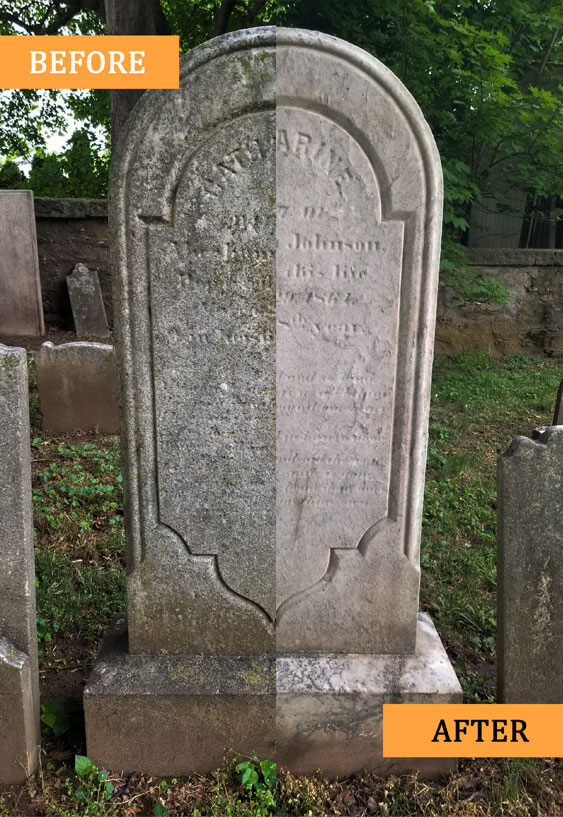
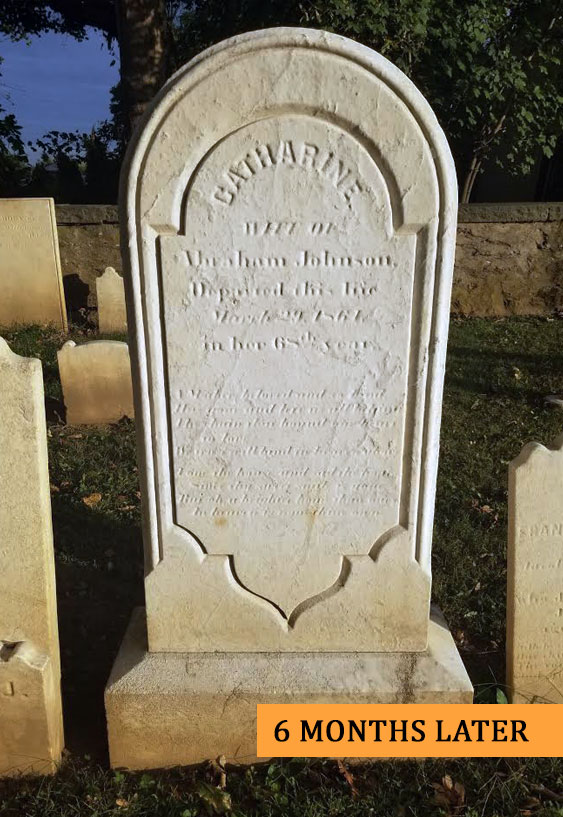
The first step is to tap the stone. By doing so the sound the stone makes tells me if it is solid or if it may be in need of some repair. Wherever a stone has been weakened in some way, the stone will have a hollow sound when it is tapped. I sometimes use just my knuckle to tap the stone but usually I use a brush handle to gently tap the stone. Next step take pictures. By taking some before pictures it gives me a point of reference as the stone is going through the cleaning process as to how much it has improved. It also gives me the opportunity to document any necessary repairs. And lastly it becomes part of the stones history and can be kept by the family of the deceased.
Now we get to the time consuming part of the process. With the stone dry and when I know there will be no rain for at least eight hours, I spray the stone completely with a generous amount of what is known as a biocide. This is a chemical that will penetrate the surface of the stone about 5 millimeters, and over time it will eliminate any lichen, mold, and mildew that are attached to and staining the stone. I never use any other cleaning products; you just can’t go under the kitchen sink and use a bottle of your favorite cleaning solution. After allowing the biocide a bit of time to work, the entire stone gets a gentle brushing, front, back, and sides, using a soft brush to remove any excess dirt and grime. This is where I spend the most amount of time, sometimes as much as an hour or two. Most historic stone do not have a very smooth surface; in fact they are very rough. A lot of biologic material can stick to the stone. The more meticulous I am in cleaning process at this point then the better the results will be at the end.
Next the stone gets a thorough rinsing with clean water. By clean I mean if you can drink it – you can use it. Once the stone has been rinsed clean then I allow it to dry completely. This can take some time depending on the day, weather conditions will generally dictate how long it will take for the stone to dry. Once dry I again spray the stone with a generous amount of biocide. And now it is God and nature that go to work. As the biocide breaks down the material imbedded in the stone, and attacks the natural stains that the stone has acquired over its history, rain and wind will slowly remove their traces. I usually give the stone at least a month until I revisit it to determine what to do next.
After a month or so has pasted I revisit the stone to see how things a progressing. At this time I may give the stone another cleaning, I may re-apply a treatment of biocide, I may just leave it alone. I will most times take some pictures so that I can make a comparison between when I started working on the stoneand where it is now. Those image comparisons usually dictate my next course of action. Then it is time to leave the stone alone again.
After another month or so I revisit the stone once more. Usually at this point there has been a major improvement in the stone, but not always. Some stones just require more time than others. Just like people they are all individuals. One again taking some pictures and doing a comparison helps to dictate the next step. Usually that means a complete spraying with biocide once more and allowing God and nature to work their magic.
Generally a month or two later on what is usually the final visit is when I see the rewards of my persistence and my patience. The stone can be completely clean and possibly have some stains that are still fading, but the changes are usually dramatic. I have gotten to know the person beneath the stone, probably a little about their history, may have gotten to know some of the family, and all of that feed into my relationship with the stone. A job well done always makes me smile.
Long ago, before headstones existed, people used to mark grave sites with a pile of stones. These stones was used as an grave site identifier. Even though we use headstones today as a grave’s official marker, the tradition of piling stones still continues.
People place stones on graves in a seemingly random way. This is because it’s a sign of disrespect to move or alter the placement of another person’s stone.
Other Jews believe stones are meant to keep the deceased person’s soul in the grave. That a person’s soul continues to settle for a period of time in their grave before going entirely to heaven. It is thought that the grave or a “beit olam” - Hebrew for a permanent home - holds a part of the departed’s soul is being kept in with stones.
It is a common practice to place a stone on a love one’s grave before leaving. In the Jewish faith it is seen as a sign that you’ve visited the grave site. The stone you leave is a sign the deceased person’s memory lives on after his/her passing. The more stones on the grave site; the more honored and respected the deceased person was in life.
Some Jews say the tradition dates back to a time when shepherds used stones to manage the number of sheep in their flock. The shepherd carried a sling over his shoulder that contained pebbles. Each pebble represented one of the sheep. Whenever the shepherd lost count of the number of sheep in his flock, he simply counted the number of pebbles in his sling to ensure his count was accurate. The placing of stones on graves is a way Jews ask God to keep the deceased person’s soul in His sling to watch over in heaven.
For those that have visited the gravesites of U.S. Veterans, you may have noticed coins placed on the top of headstones that were left there by previous visitors and wondered why they were left behind. A coin left on a headstone is a message to the deceased veteran’s family that someone has visited their loved one’s grave and paid their respects. Each denomination of coin left on the top of the headstone for the veteran has its own meaning.
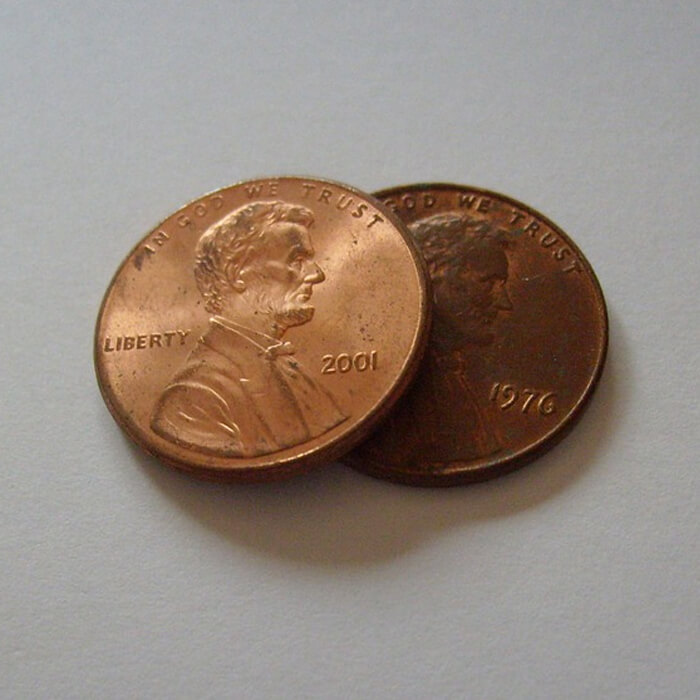
left on the top of the headstone means that the gravesite was visited.
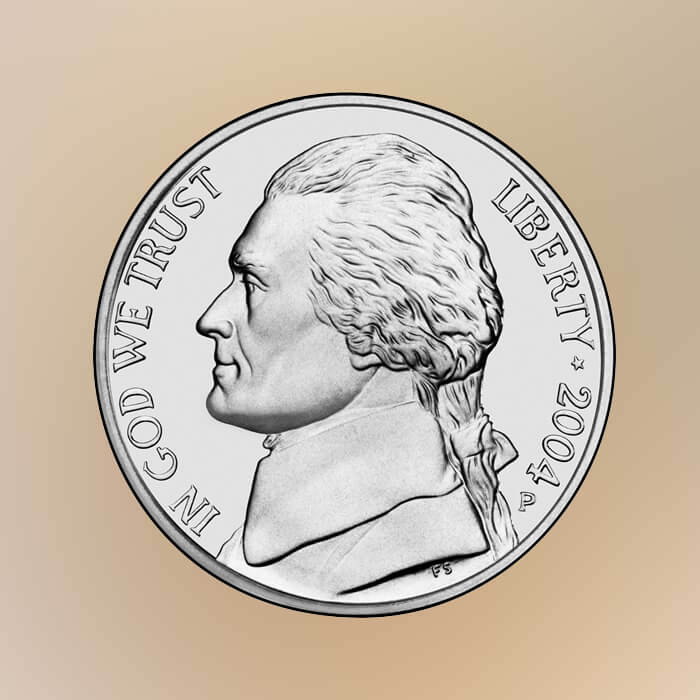
indicates that the person who visited the site trained at boot camp with the deceased veteran.
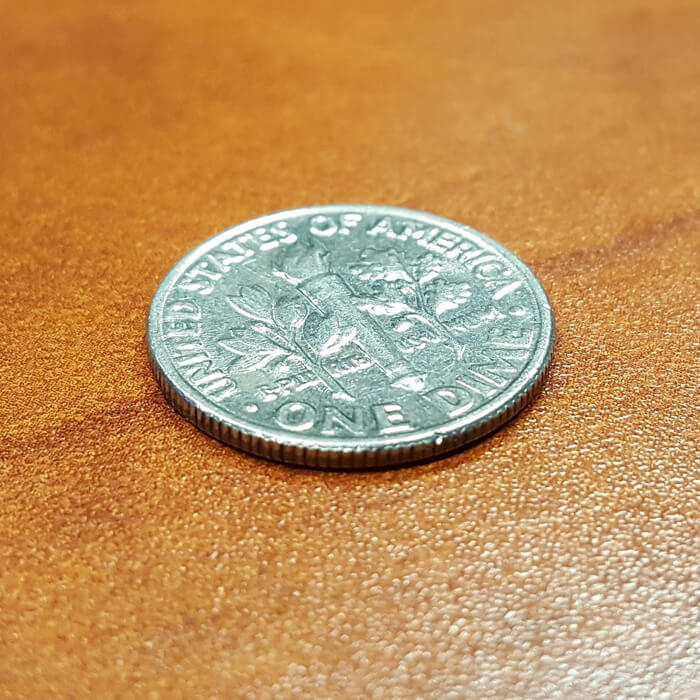
means the visiting person served with the deceased veteran in some capacity.
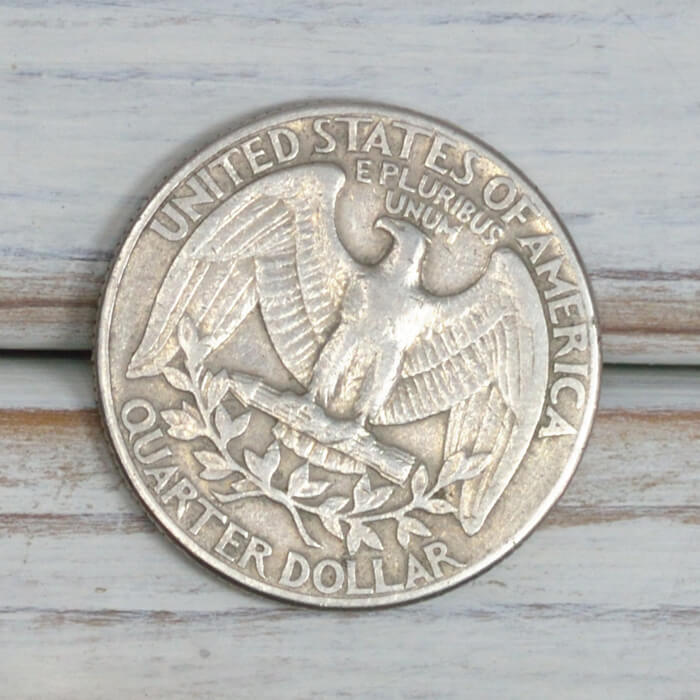
left on the grave means that the person who left the coin was with the veteran when they were killed.
In recent times, coins have been used to indicate that someone has visited the gravesite and wanted to let the deceased know that they are not forgotten and that they are still being cared for. The practice is believed to have first begun in the United States during the Vietnam War as a way to pay respect to the fallen servicemen. One common practice in the military is leaving behind “Challenge Coins” on the graves of deceased servicemen. These tokens usually bear the emblem of the deceased’s military unit. These Challenge Coins are usually left there by their service unit members / brothers-in-arms. Challenge Coins started gaining popularity during the Vietnam War when Special Forces units started using them. Eventually, the use of Challenge Coins became more widely used for the rest of the service branches of the U.S. Military. Challenge Coins are used to prove membership in an organization when challenged. They are also presented by unit commanders to a member of the unit in recognition for a special achievement.
The money placed in national and state veteran’s cemeteries is collected and put towards future burial costs and the cemetery’s maintenance. While not always common, the practice of leaving behind mementos on top of gravestones dates back to the beginning of the human species as a way to pay respect to the person buried there. Pottery, jewelry and other sorts of goods have been placed at grave sites throughout history. In some cases, these goods were thought to carry on to the person to the afterlife.
I am always anxious to make contact with those who share my passion for cleaning, repairing, and resetting historic and family gravestones. Although my home base is generally around the Philadelphia, Bucks, & Montgomery County areas in the state of Pennsylvania I enjoy hearing from others around the entire United States. If you are a professional please send me your contact information, if you are volunteer or hobbyist please take a few moments to share your restoration experiences.
© 2019 Tidy Tombstones. All Rights Reserved.